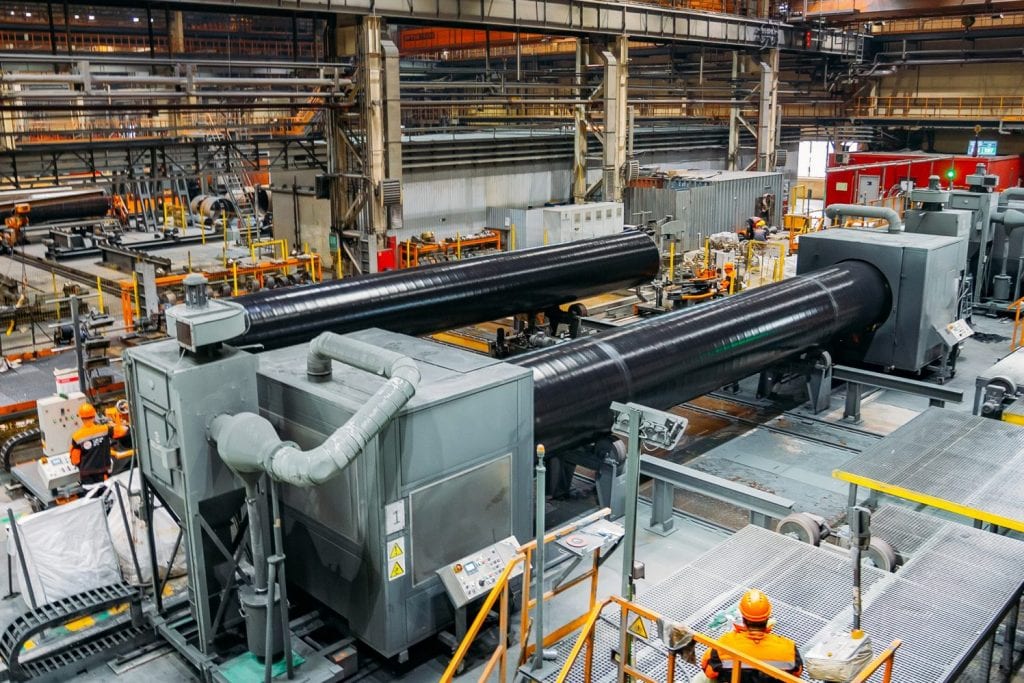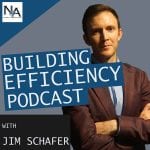Commercial & Industrial IoT | FAQs
Industrial IoT, short for the Industrial Internet of Things, originally described the Internet of Things (IoT) as it is used across several industries, such as manufacturing (Industry 4.0), logistics, oil and gas, transportation, energy/utilities, mining and metals, aviation and other industrial sectors and the use of inter-connected devices to supply users with relevant and actionable data utilized to improve business and operational processes.
How can an advanced lighting system make my operation more efficient?
Lighting accounts for one-third of electricity use in New York City commercial buildings, according to a 2010 Con Edison report. Finding a way to reduce energy is a worthwhile endeavor and advanced lighting system experts, like SBT Alliance, can make it a painless process.
Advanced lighting technology can ensure only spaces that must be lit are, and at the appropriate level for employees to do their best work. When a space is unoccupied, lights can be set to automatically turn off or dim, saving you energy and money.
To ensure your advanced lighting system is, in fact, improving your efficiency, first, you will need to benchmark your facility’s current energy usage. You can do this with a professional audit that looks at your existing system inventory any machinery that uses energy, lighting included to determine how much energy is being used. From there, a professional advanced lighting controls consultant can explain where higher efficiency can be achieved.
Once the project has been completed, the vendor should do another audit to ensure your money, energy and capital cost goals have been achieved with the advanced control system.
Why is it important for building systems to be connected wirelessly?
With the dawn of Smart Homes, Smart Buildings and connected everything, the future really is wireless. Wirelessly connected devices help people use energy more efficiently, but also more effectively. Why have over-lit spaces running 24/7, when you could have the right amount of light needed for the task at hand that can turn on, off and dim automatically?
Not only do wireless technologies allow users to program the lighting system, but they also allow you to glean data from its actual usage so you can make data-driven decisions about your energy consumption.
How does lighting affect my employees productivity in the commercial industrial sector?
When lighting is not tailored to the tasks employees are performing, it can negatively impact productivity. If the lights are too low or are placed incorrectly, it can slow down productivity and lead to errors. The right light in the right place, although often taken for granted, is essential for a successful operation.
How much training does it require to operate an integrated lighting solution?
Minimal training is required. When you partner with SBT Alliance, we can take care of the operational side of things. With a wireless network, we can perform remote diagnostics and maintenance and fix a problem before you even know there was one. However, if your operations team would like to be more hands-on with the system, we can provide the necessary training within a few days.
How do we start reducing our environmental footprint with our lighting system?
One of the biggest benefits of an advanced lighting system is energy use reduction. If your business has a sustainability objective, we can help you meet it with the right equipment and lighting schedules. The first step is to contact SBT Alliance for an energy audit.
By evaluating all sources of energy in your operation, engineers can spot where efficiencies can be achieved. Once a system is upgraded, another audit should be performed so that you can accurately determine the effectiveness of the upgrade.
How does lighting impact worker safety in industrial environments?
Harsh industrial environments are often ripe for accidents. Proper illumination is critical for safe and productive work environments. An easy way to avoid worker accidents and eye-strain is with proper lighting. When the work environment is illuminated properly, workers are less likely to make costly mistakes and get injured.
When choosing an advanced lighting system, you will need to consider the type of equipment used, budget, productivity goals and the type of work performed. Additionally, when looking at lighting design, important considerations include quantity and quality of light, amount of flicker and glare, contrast and shadows. Always review the Occupational Safety and Health Administration’s Industrial Lighting Standards when considering a new system. It will help guide decision-making to ensure worker safety. Then, turn to a professional to address concerns including design, placement and installation.
How can changing our lighting system benefit our entire operation?
Lighting can impact everything from worker health and safety to productivity and error minimization all of which can affect your bottom line. In addition, the right lighting system can help reduce your environmental footprint and energy costs. Lighting should not simply be an afterthought; it should be an important consideration in all operational planning.
What does ``future-proofing`` of LED products mean?
Thanks to rapid innovation and constantly changing technology, LEDs keep getting better. Future-proofing of LEDs means that lighting manufacturers are able to switch your system from one generation to the next without major retooling or changes. This makes keeping your lighting technology up-to-date easy, with little cost or effort.
What should I do/how do I know if my advanced-control system devices are not working properly?
Many times, systems are decommissioned unknowingly. This happens because these systems operate in ways that are not intuitive to the ways lighting systems had been operating for the last 50 to 60 years.
When something is not working properly, facility managers typically have no one to call for support. In turn, they often reset the sensor or control device and if it is on a wireless system, this action kicks the device off the network. The lights stay on now, but the system is not working at its best or how it was originally designed. It’s not maximizing energy savings; it’s not using the data available to operate at peak performance.
Many times, lights are left on 24/7, so people in the building are satisfied, but the energy bills are sky high. This is a very common problem even more than one might think. Today, there are services available to support businesses when an issue arises so that they can ensure the building occupants and whomever is paying the electric bill are both satisfied, and your lighting systems continue to operate properly.
Often with cloud-based networked lighting systems, technicians can fix problems remotely before a potential issue is even noticed by the building occupants, making it possible to achieve real-time preventative maintenance.
If you’re system utilizes Daintree, you can sign up for a FREE Secure & Scan Analysis here to detect any issues with your existing system.
How do I know if my advanced network control system is actually saving us energy?
It is important to remember that just because you have an advanced networked control system and you think you are saving energy; it doesn’t mean that you are. When you have a support partner, like SBT Alliance, with the expertise to ensure the system is running efficiently and saving you money, then you can be sure you are optimizing your system to best meet your goals and help your business generate revenue.
Often, a controls system audit will reveal additional opportunities to gain efficiency, productivity and profitability. Now, we can use the abundance of data the system collects and big data analytics to improve the efficiency of your warehouse staff or to know where to place certain products in a retail environment to increase sales.
What are the benefits of a cloud-based system?
The benefits of a cloud-based system are many. Now, technicians rarely need to come to the site for maintenance or repairs because they can access the system remotely, speeding up service times significantly. With the original systems, we wouldn’t know if the system was not functioning properly unless a customer advised us. Now, advanced lighting systems, when coupled with the right ongoing service package, can proactively fix issues remotely before people on site even know there was a problem.
How can our lighting system help us remain strong in industrial manufacturing?
To be competitive in manufacturing, you must look at every cost. With nearly 80 percent of a warehouse’s energy bill coming from lighting, efficient LED lighting can make a huge difference in energy costs, as well as productivity and operational efficiency.
What kind of maintenance is required for advanced control systems?
Quarterly maintenance, or at least annual maintenance, is required to keep an advanced networked control system running smoothly and at peak performance. There is no downtime during routine maintenance and a technician can typically service the system remotely.
In the past, facilities staff were required to learn how to operate these systems. How well facility staff was trained is another matter altogether. Poorly trained staff can make changes to the system that can cause it to use more energy than before it was installed. With today’s advancements in cloud-based technologies, third-party technicians can securely access the system remotely when there is an issue and resolve it quickly with minimal intervention from the facilities or building manager.
How do we know if our advanced control system is really saving us money, energy and capital costs?
Lighting accounts for one-third of electricity use in New York City commercial buildings, according to a 2010 Con Edison report. Finding a way to reduce energy is a worthwhile endeavor and advanced lighting system experts, like SBT Alliance, can make it a painless process.
First, you will need to benchmark your facility’s current energy usage. You can do this with a professional audit that looks at your existing system inventory any machinery that uses energy, lighting included to determine how much energy is being used. From there, a professional advanced lighting controls consultant can explain where higher efficiency can be achieved.
Once the project has been completed, the vendor should do another audit to ensure your money, energy and capital cost goals have been achieved.
How can I ensure my wireless networked controls system is operating as efficiently as possible?
The one way that you can know for sure how efficiently your HVAC and lighting system is operating is with an audit by a professional advanced wireless controls system specialist, like SBT Alliance. Once you are sure your system is programmed to meet your needs, it is important to monitor your system for any issues. SBT Alliance can do that for you, all remotely, in real-time. End-users can be notified to issues as little or as much as they want with custom alerts. Regardless, a vendor like SBT Alliance will handle any issues without the need to burden you with the details, unless you want them, of course!
When you partner with the experts, you can rest assured that your system is always operating at peak performance even while you’re sleeping! With remote monitoring capabilities, you never have to worry about your system because it can be monitored, and many times, even repaired, without your intervention.
Advanced lighting controls systems are networked and, therefore, highly flexible. They allow you to check on the status of sensors and fixtures across a facility which is very helpful for troubleshooting. Networked systems can gather data and report on occupancy patterns, energy use, system performance giving you more control over how and where you enhance energy efficiency.
Who should be involved in my lighting project and what kind of training will they need?
The project team may consist of maintenance, facility and general managers, building owners and other leaders. Ideally, you should choose partner who is system agnostic and will manage the project for you from beginning to end. Although advanced lighting and HVAC system technology has advanced dramatically in the last 5-10 years, it is complex, so the project should be managed by wireless control system experts.
Minimal training is required to operate today’s more advanced networked controls systems, but SBT Alliance does recommend that major stakeholders have a general understanding of how their system works and its capabilities. Whether you feel most comfortable with a two-hour web-based training or a three-day on-site training, you can choose the right level of training for your needs.
How can you support me when my lighting system doesn't work how it's supposed to?
With real-time monitoring, an advanced lighting system professional can ensure that your lighting system is operating at peak performance. Whether your system requires on-site work, collaboration with an electrical contractor or remote service, an expert, such as SBT Alliance can help.







Recent Comments